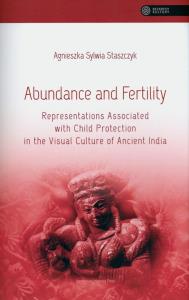
Abundance and Fertility
Representations Associated with Child Protection in the Visual Culture of Ancient India
-
Autor: Staszczyk Agnieszka Sylwia
- ISBN: 978-83-233-5252-5
- EAN: 9788323352525
- Oprawa: miękka ze skrzydełkami
- Wydawca: Wydawnictwo Uniwersytetu Jagiellońskiego
- Format: 230x150x25mm
- Język: angielski
- Seria: BEZKRESY KULTURY
- Liczba stron: 498
- Rok wydania: 2023
- Wysyłamy w ciągu: 48h
-
Brak ocen
-
43,18złCena detaliczna: 48,30 złNajniższa cena z ostatnich 30 dni: 35,10 zł
This work is a fascinating attempt to probe deep into the socio-cultural ramifications of the visual artefacts of ancient India, which has a rich heritage of iconographic treasures of varying sizes and styles. The art objects selected for analysis are mainly from the Mathura region of the Kushan era and belong to a period between 5060 and 300 of the Common Era. This period is perceived as that of multicultural environment enriched with different streams of tradition. According to the author they are directly related to the themes of abundance and fertility, its perceived cause. The author demonstrates how these distant fragments of visual imagery can yield rich insights of the world view of the communities which produced them. The work critically analyses the representation of spiritual deities consisting of Ekanamsha, Hariti, Matrikas, Naigamesha, Shashthi and Skanda who were associated with the function of child protection. Understandably, they were the products of a belief in supernatural powers which could offer psychological protection to women cutting across different socio-economic classes at the times of great psychological stress like pregnancy, childbirth and puerperium. The artefacts are carved in stone. Sometimes they are projected as isolated individuals and at other times as belonging to multi-character panels. Depending on their size, they had different functions: bigger objects could be fixed at some places and smaller ones carried from place to place.
Excerpt from the review of Dr. C. Rajendran

